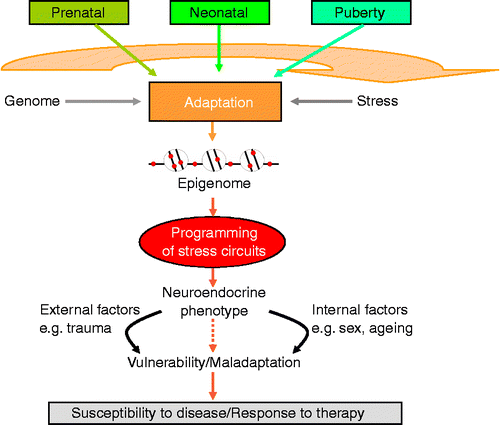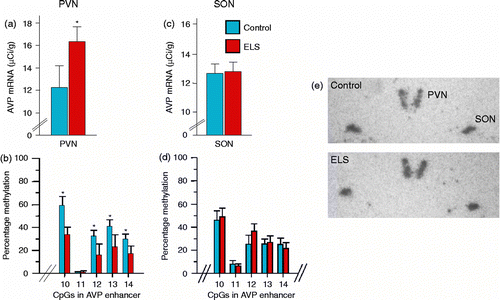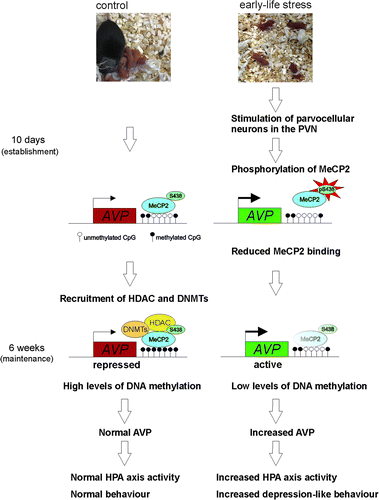Figures & data
Figure 1. Long-term programming of the stress system takes place during critical developmental time windows. The environment during early life can persistently alter the expression levels of key genes by epigenetic marking thus initiating adjustments in behaviour, neuroendocrine and stress responsivity throughout later life. The nature of the environment and experiences throughout later life, in addition to the impact of biological processes associated with aging and genetic sex, may exacerbate the programming established during early life resulting in increased vulnerability to and manifestation of mood disorders.

Figure 2. Early life stress induces tissue-specific programming of AVP. Early-life stress leads to (a) increased AVP mRNA expression and (b) hypomethylation of the AVP enhancer in the PVN. (c) AVP mRNA expression and (d) DNA methylation were unaltered in the SON. Representative in situ hybridizations of AVP expression in the hypothalamus of control and early life stressed mice (e).

Figure 3. Epigenetic programming of AVP. Experience-dependent activation of neurons in the PVN during early life leads to phosphorylation of MeCP2 inhibiting its DNA binding to and repression of AVP. In the absence of MeCP2-binding DNA, hypomethylation gradually evolves in early life stressed mice underpinning reduced MeCP2 occupancy at the AVP enhancer and maintaining epigenetic control of AVP expression into later life.

